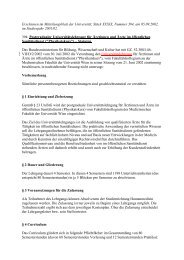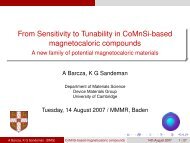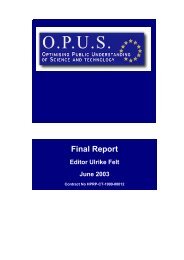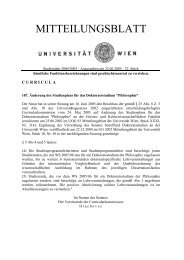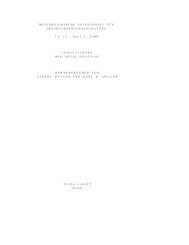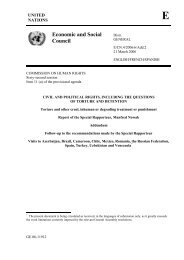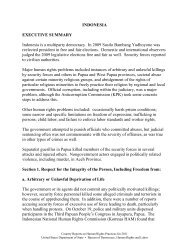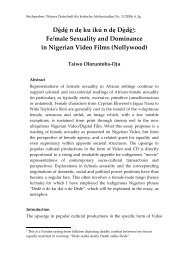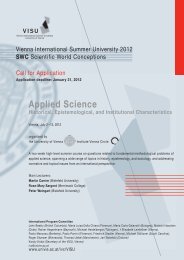(Stand: 25. Juli 2007) ANDERSON, Michael Alan ... - Universität Wien
(Stand: 25. Juli 2007) ANDERSON, Michael Alan ... - Universität Wien
(Stand: 25. Juli 2007) ANDERSON, Michael Alan ... - Universität Wien
Create successful ePaper yourself
Turn your PDF publications into a flip-book with our unique Google optimized e-Paper software.
MEDIEVAL & RENAISSANCE MUSIC CONFERENCE <strong>2007</strong> – WIEN, 7.-11. AUGUST ABSTRACTS<br />
Austrian culture.<br />
My paper will trace the history of writing about Schmeltzl, and through it the trends<br />
in the historiography of German and Austrian Renaissance music. I will investigate how<br />
it is that Schmeltzl, who is an uncertain figure in musical terms, gained his position in<br />
music historiography. Finally I will address the question as to why his influence on<br />
changing musical practice in Catholic regions has not been investigated in more detail and<br />
consider what directions research might take in the future.<br />
� �<br />
ROTHENBERG, David J. (Case Western Reserve University)<br />
The Antiphon Virgo prudentissima and Isaac’s Music for Emperor Maximilian I<br />
Freitag/Friday, 10.8., 9.15 Uhr, MuWi, HS 1<br />
Heinrich Isaac used the Assumption antiphon Virgo prudentissima as a cantus firmus in<br />
three compositions: (1) the ceremonial motet of the same title, composed in 1507 while<br />
Isaac was in Constance preparing for the coronation of Emperor Maximilian I, (2) the sixvoice<br />
Missa Virgo prudentissima, and (3) Gaudeamus omnes, the Assumption introit in volume<br />
two of the Choralis Constantinus. In this paper I propose for the first time a compositional<br />
relationship between these three works, arguing that together they played a special<br />
symbolic role within the massive liturgical cycle for Maximilian’s court that Isaac spent<br />
the latter part of his career composing (much of it later published in the Choralis Constantinus).<br />
Specifically, I argue that these works adorned the Assumption liturgy on 15 August<br />
so that Maximilian’s ascent to the Imperial throne might be aligned symbolically with the<br />
Virgin Mary’s coronation as Queen of Heaven, which took place immediately upon her<br />
Assumption into heaven. After establishing the coronation symbolism of the Virgo prudentissima<br />
antiphon, I argue that Isaac’s Gaudeamus omnes was intended for Maximilian’s<br />
court because it quotes the antiphon and because it fills a lacuna within the Imperial mass<br />
for the Assumption transmitted in volume three of the Choralis Constantinus. This argument<br />
overturns the scholarly consensus that the contents of volume two of the Choralis<br />
were commissioned by the Cathedral of Constance for its exclusive use. The closing portion<br />
of the paper presents new liturgical evidence that much of volume two could in fact<br />
have been used at Maximilian’s court as well as at the Cathedral of Constance, providing<br />
liturgically appropriate music for Easter, Christmas, and other central liturgical celebrations<br />
that are curiously absent from what is presently believed to constitute Maximilian’s<br />
Imperial liturgical cycle.<br />
� �<br />
- 65 -




